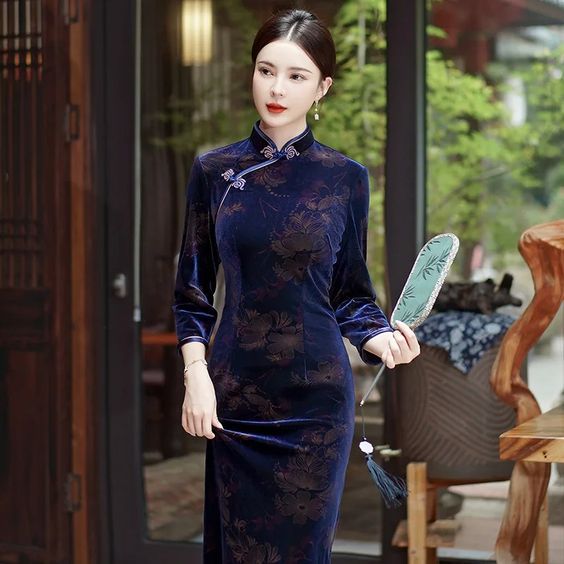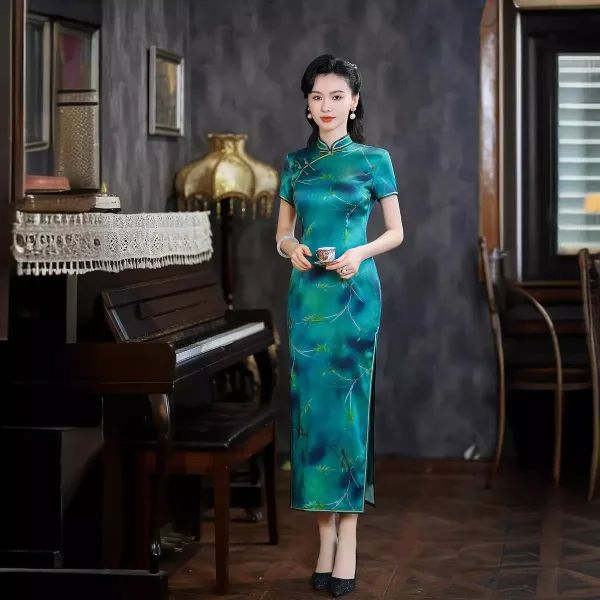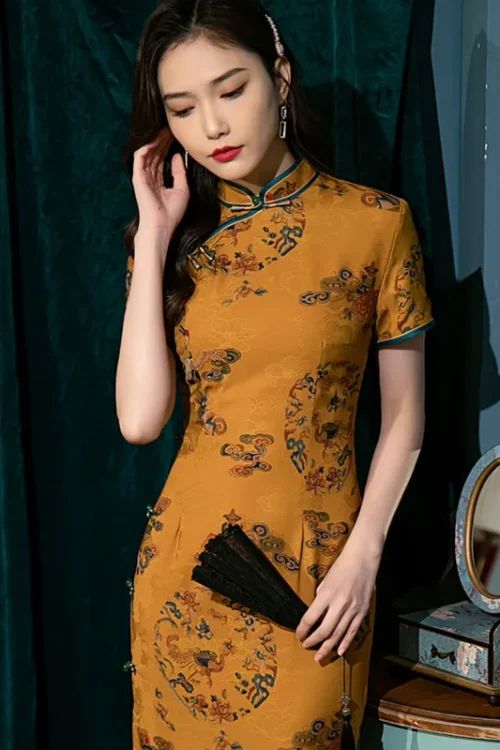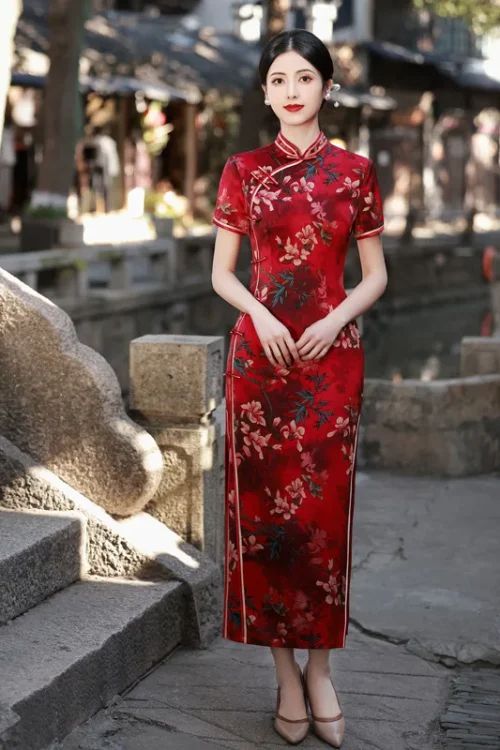In contemporary Chinese wedding photography, newlyweds often don “traditional” Chinese attire, typically the qipao or 长衫 for women and the changshan for men. However, these garments are not authentic representations of pre-1644 Han Chinese clothing styles (hanfu). Instead, they are inspired by the fashion of the Manchu dynasty, which ruled China from 1644 to 1912.
The Manchus, an ethnic minority from Manchuria, imposed their customs and dress codes on the Han Chinese population after conquering China. The qipao, a long, form-fitting dress with a high collar and side slits, was originally worn by Manchu women. Over time, it was adopted by Han Chinese women and became a symbol of Chinese femininity. Similarly, the changshan, a loose-fitting robe with a mandarin collar, was derived from Manchu men’s clothing.

The adoption of Manchu-inspired clothing by Han Chinese was not merely a matter of fashion. It was also a reflection of the political and cultural dominance of the Manchus. By wearing these garments, Han Chinese expressed their submission to the ruling dynasty and their acceptance of its cultural norms.
After the fall of the Manchu dynasty in 1912, the qipao and changshan continued to be popular among Han Chinese. However, they gradually lost their political and cultural significance and became simply fashionable garments. Today, they are often worn for special occasions, such as weddings, as a way to evoke a sense of tradition and elegance.
While the qipao and changshan are not authentic representations of pre-1644 Han Chinese clothing, they have become an integral part of Chinese cultural identity. They are a testament to the enduring influence of the Manchu dynasty and a reminder of the complex history of Chinese fashion.

In recent years, there has been a growing interest in reviving authentic hanfu styles. Some Han Chinese people are choosing to wear hanfu for weddings and other special occasions as a way to reconnect with their cultural heritage. This trend reflects a growing awareness of the importance of preserving and promoting traditional Chinese the realm of wedding photography, newlyweds often don traditional Chinese attire to capture the essence of their cultural heritage. However, the qipao or cheongsam, a garment commonly featured in these photos, is not a true representation of pre-1644 Han Chinese clothing styles. Instead, it is a Manchu-inspired creation that emerged during the Qing dynasty.
The Manchus, an ethnic minority from Manchuria, conquered China in 1644 and established the Qing dynasty. They imposed their own customs and traditions on the Han Chinese population, including a new dress code. The qipao, a long, form-fitting gown with a high collar and side slits, was adopted by Han women as a symbol of submission to the Manchu rulers.
Over time, the qipao evolved into a fashionable garment, worn by women of all social classes. It became synonymous with Chinese identity, despite its Manchu origins. This is largely due to the fact that the Qing dynasty was the last imperial dynasty of China, and its cultural influence continues to resonate today.

In the early 20th century, the qipao underwent a revival as a symbol of Chinese nationalism. It was worn by prominent figures such as Soong Mei-ling, the wife of Chiang Kai-shek, and became a popular choice for wedding attire. This trend has continued into the present day, with many newlyweds opting to wear qipaos for their wedding photos.
However, there has also been a growing movement to revive pre-1644 Han Chinese clothing styles, known as hanfu. Hanfu enthusiasts argue that the qipao is not a true representation of Han Chinese culture and that it should be replaced by more authentic garments.
The debate over the authenticity of wedding attire reflects a broader cultural assimilation that has occurred in China over the centuries. The Manchu-inspired qipao has become so deeply ingrained in Chinese culture that it is often mistaken for a traditional Han Chinese garment. This is a testament to the power of fashion to shape our perceptions of history and identity.
Ultimately, the choice of wedding attire is a personal one. Some newlyweds may prefer the qipao as a symbol of their Chinese heritage, while others may opt for hanfu as a way to connect with their pre-Manchu roots. Regardless of their choice, it is important to be aware of the historical and cultural context behind these garments.
In the realm of wedding photography, newlyweds often don traditional Chinese attire to capture the essence of their cultural heritage. However, the qipao or cheongsam, a garment commonly featured in these photos, is not a true representation of pre-1644 Han Chinese clothing styles. Instead, it draws inspiration from the Manchu people, who ruled China during the Qing dynasty.

The qipao, also known as the cheongsam, emerged during the early 20th century as a fusion of Manchu and Western influences. Its form-fitting silhouette and high neckline were influenced by the Manchu women’s robe, while its use of vibrant colors and intricate embroidery reflected the aesthetics of the time.
The adoption of the qipao as a symbol of Chinese tradition can be attributed to several factors. Firstly, the Qing dynasty was the last imperial dynasty of China, and its cultural legacy continues to resonate in modern society. Secondly, the qipao’s elegant and sophisticated design has made it a popular choice for formal occasions, including weddings.
However, the use of the qipao in wedding photography has also sparked debate among cultural enthusiasts. Some argue that it perpetuates a misconception about traditional Han Chinese clothing, which was characterized by loose-fitting robes and flowing sleeves. They advocate for the revival of hanfu, the authentic clothing styles worn by Han Chinese before the Qing dynasty.
Despite these concerns, the qipao remains a popular choice for newlyweds seeking to incorporate Chinese elements into their wedding photos. Its timeless appeal and cultural significance continue to make it a symbol of tradition and elegance.
In conclusion, the use of Manchu-inspired qipao in wedding photography is a testament to the enduring influence of the Qing dynasty and the fusion of cultural elements that has shaped Chinese society. While it may not be an accurate representation of pre-1644 Han Chinese clothing, the qipao has become a beloved symbol of Chinese tradition and a cherished part of the wedding photography experience.
